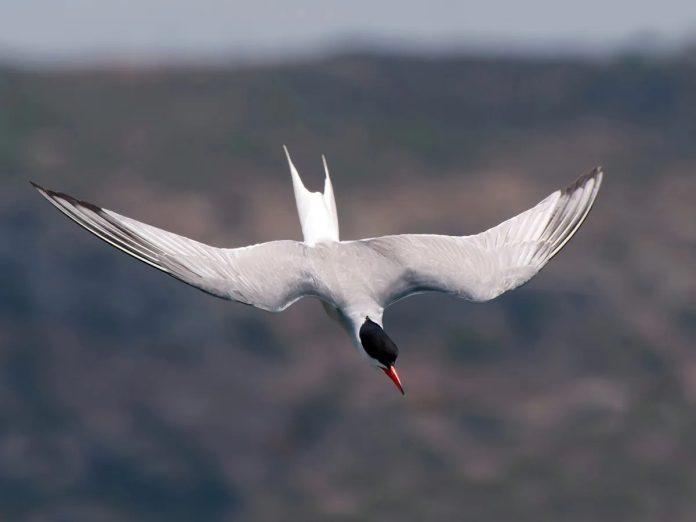Birds are some of the most fascinating creatures when it comes to movement, particularly their flight. While observing birds in the sky, you may notice different patterns in how they fly—some flap their wings rapidly, others glide gracefully, and some even fly in groups forming intricate formations. Each of these flight patterns has a specific purpose related to the bird’s anatomy, environment, and survival needs. In this article, we will explore the most common flight patterns of birds and the reasons behind these behaviors.
Table of Contents
Toggle1. Types of Flight Patterns in Birds
Birds exhibit a variety of flight patterns that are adapted to their size, environment, and lifestyle. Here are some of the most common types:
- Flapping Flight: This is the most basic and common type of flight used by birds. It involves the bird continuously flapping its wings to generate lift and thrust. Birds like pigeons, sparrows, and crows use this pattern for short to medium distances. The energy-intensive flapping flight allows birds to maneuver through trees, escape predators, and quickly navigate their environment.
- Gliding and Soaring: Larger birds, such as eagles, vultures, and seagulls, often use gliding or soaring flight. These birds flap their wings only occasionally, relying on air currents to maintain altitude and travel long distances without expending much energy. Soaring is commonly seen in birds of prey as they search for food from high altitudes, taking advantage of thermal currents to stay aloft for extended periods.
- Hovering: Hovering is a specialized flight pattern where a bird remains stationary in the air by rapidly flapping its wings. Hummingbirds are the most famous for this ability, allowing them to feed on nectar from flowers while remaining in one spot. Kestrels and kingfishers also hover as they search for prey below.
- V-Formation Flight: This pattern is commonly observed in migratory birds, such as geese and pelicans, flying in a V-formation. Birds in this formation take turns leading and following. The purpose of this flight pattern is to reduce air resistance for the group, allowing the birds to conserve energy during long migrations.
- Bounding Flight: Small birds such as finches and woodpeckers use bounding flight, characterized by rapid flapping followed by brief periods of gliding. This flight pattern is energy-efficient and allows birds to conserve energy over long distances while maintaining speed.
2. Why Birds Use Different Flight Patterns
The specific flight patterns adopted by birds are the result of various evolutionary adaptations. Birds use flight patterns to enhance their survival in a number of ways, including:
- Energy Conservation: Flying is an energy-demanding activity, especially for long distances. Birds that migrate or travel long distances, such as swans, cranes, and geese, use gliding and V-formation flight patterns to conserve energy. By soaring on thermal air currents or flying in formations, these birds reduce the amount of energy required for continuous flapping, allowing them to travel farther without exhaustion.
- Hunting and Foraging: Birds of prey such as hawks and eagles use soaring flight to stay airborne while scanning the ground for prey. This allows them to cover large areas while conserving energy for the sudden bursts of speed required to catch their prey. Birds like hummingbirds, on the other hand, use hovering flight to stay in one position while feeding on nectar, which requires precise control and agility.
- Maneuverability: For birds that live in dense environments like forests, such as sparrows and woodpeckers, flapping and bounding flight patterns allow for quick, precise movements. These patterns help them dart through branches and foliage with ease, enabling them to forage and escape predators quickly.
- Migration and Long-Distance Travel: Many birds migrate seasonally, traveling thousands of miles to reach warmer climates or breeding grounds. The V-formation flight pattern is essential for these journeys, as it reduces drag for the birds following behind the leader. By rotating leadership, the flock can maintain a steady pace while minimizing individual fatigue, allowing them to cover great distances with less energy.
3. Environmental Factors Influencing Flight Patterns
Birds’ flight patterns are also influenced by environmental conditions, such as weather, geography, and available air currents.
- Wind and Air Currents: Birds take advantage of air currents to reduce the effort required to stay airborne. For example, albatrosses are known for their ability to glide over the ocean for hours using dynamic soaring, a technique that involves riding on wind gradients near the ocean’s surface. Wind patterns can also dictate when and how birds fly during migration, with many species timing their flights to coincide with favorable tailwinds.
- Weather Conditions: Birds often alter their flight patterns based on weather. During storms or windy conditions, many birds will choose to remain grounded or seek shelter rather than risk flying in turbulent air. However, some species are highly skilled at navigating stormy conditions, using their powerful wings to stay aloft.
- Landscape and Geography: The physical landscape also plays a role in bird flight patterns. Birds flying over open plains may rely more on gliding, while birds in mountainous or forested regions need to use more flapping flight for maneuverability. Birds of prey often soar above ridges and cliffs, where rising air currents help them gain altitude without exerting much effort.
4. The Role of Flight in Survival and Adaptation
Flight is more than just a means of travel for birds—it is a critical survival tool. The type of flight a bird uses can influence its ability to hunt, escape predators, migrate, and find mates. Over millions of years, birds have evolved a variety of flight strategies that allow them to adapt to their specific environments.
- Predator Evasion: Many small birds use erratic flight patterns, such as zigzagging or rapid flapping, to evade predators. This unpredictable movement makes it difficult for larger predators to track and catch them. Birds that can take off quickly or change direction in mid-air, such as pigeons and doves, have a better chance of surviving attacks from raptors.
- Efficient Migration: Migratory birds have developed flight strategies that enable them to travel thousands of miles across continents and oceans. By using air currents, thermals, and flight formations, these birds optimize their energy expenditure, ensuring they arrive at their breeding or feeding grounds in good condition.
The Fascinating World of Bird Flight Patterns
Birds’ flight patterns are as diverse as the species themselves, each serving a distinct purpose that helps the bird survive and thrive in its environment. From the energy-efficient soaring of eagles to the precise hovering of hummingbirds, these patterns are the result of millions of years of evolution. Understanding these flight behaviors not only gives us insight into the daily lives of birds but also highlights the incredible adaptability and resilience of the avian world.
So, the next time you see birds gliding effortlessly in the sky or darting through trees, remember that there is much more to their flight than meets the eye—it’s a complex and fascinating aspect of their survival strategy.








